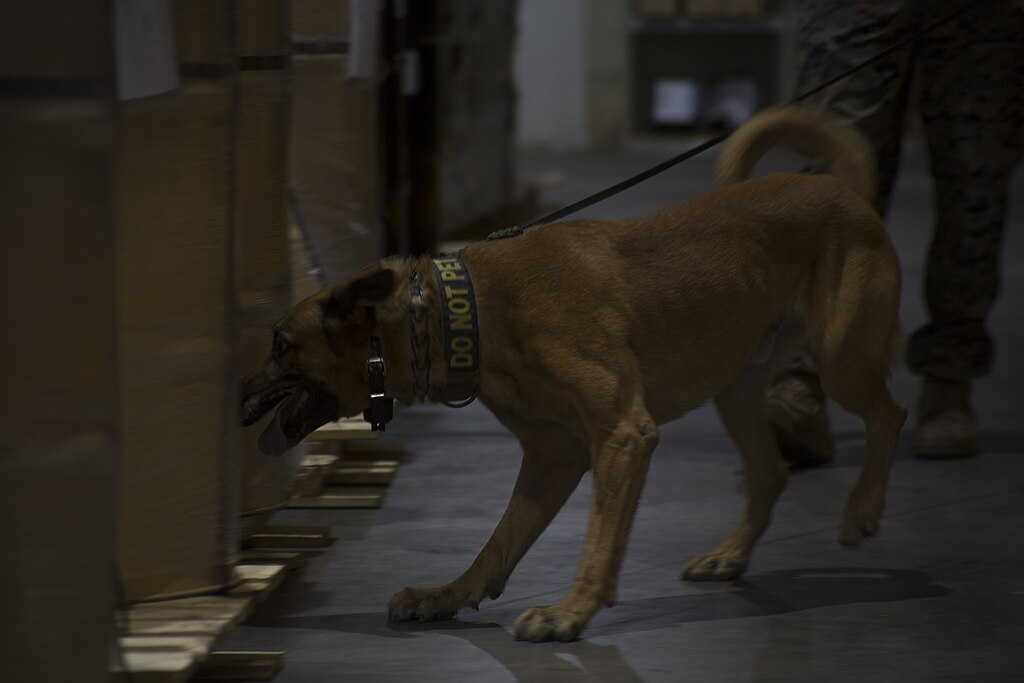Explosive detection dogs do more than search. They read environments, filter out noise, and communicate danger with calm precision. Mastering explosive detection means building that ability from the ground up—step by step, scent by scent.
Start with Odor Imprinting
Training begins by introducing one explosive compound at a time. Use either real samples or certified pseudo-scents like TNT, RDX, or ANFO. Place the target odor in a sterile container—PVC tubes or stainless scent boxes work best.
Allow the dog to approach freely. The moment it pauses, sniffs, or shows interest, mark the behavior and reward with food or toy. Keep early sessions short and focused. Once the dog consistently identifies the scent, begin rotating in new compounds while ensuring clean handling and no cross-contamination.
Build Precision with Container Work
Set up search lines with identical containers. Only one should hold the target scent. Rotate container position each round to prevent pattern learning. Begin with visual placement, then gradually conceal the source.
Add distractions—empty food wrappers, toys, or human scent. Reinforce only when the dog ignores distractions and clearly indicates the correct container. This step reinforces the dog’s ability to isolate explosives from background noise.
Shape the Passive Alert
The alert must be clear, calm, and consistent. Train the dog to sit or down in front of the source without barking, biting, or pawing. Use leash guidance and marker timing to reinforce the behavior.
Repeat until the alert becomes automatic. Inconsistent alerts or hesitation during searches can lead to false positives or missed threats, especially in high-stress environments.
Proof in Complex Environments
Once the dog performs reliably in training areas, move into real-world spaces—cars, airports, buildings, and open fields. Introduce challenges: slippery floors, stairs, loud machinery, or crowds. Work during different times of day and in various weather conditions.
Create realistic distractions. Include non-target odors like cleaning products or gun oil. Dogs must learn to ignore irrelevant smells and focus only on known explosives.
Drill for Real-World Deployment
Simulate scenarios with multiple targets, time limits, or unexpected obstacles. Practice communication with support teams. Use drills where the handler is unaware of the placement. This builds independence and removes handler bias.
Repeat these exercises regularly. Confidence under pressure only comes from repeated, controlled exposure to uncertainty.
Maintain Performance Through Testing
Even experienced teams need refreshers. Conduct double-blind searches, vary reward frequency, and change locations. Mastering explosive detection is not a one-time event—it’s a continuous process built on consistency, accuracy, and handler trust.

